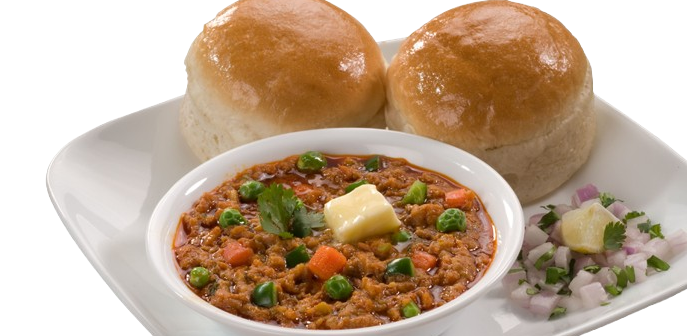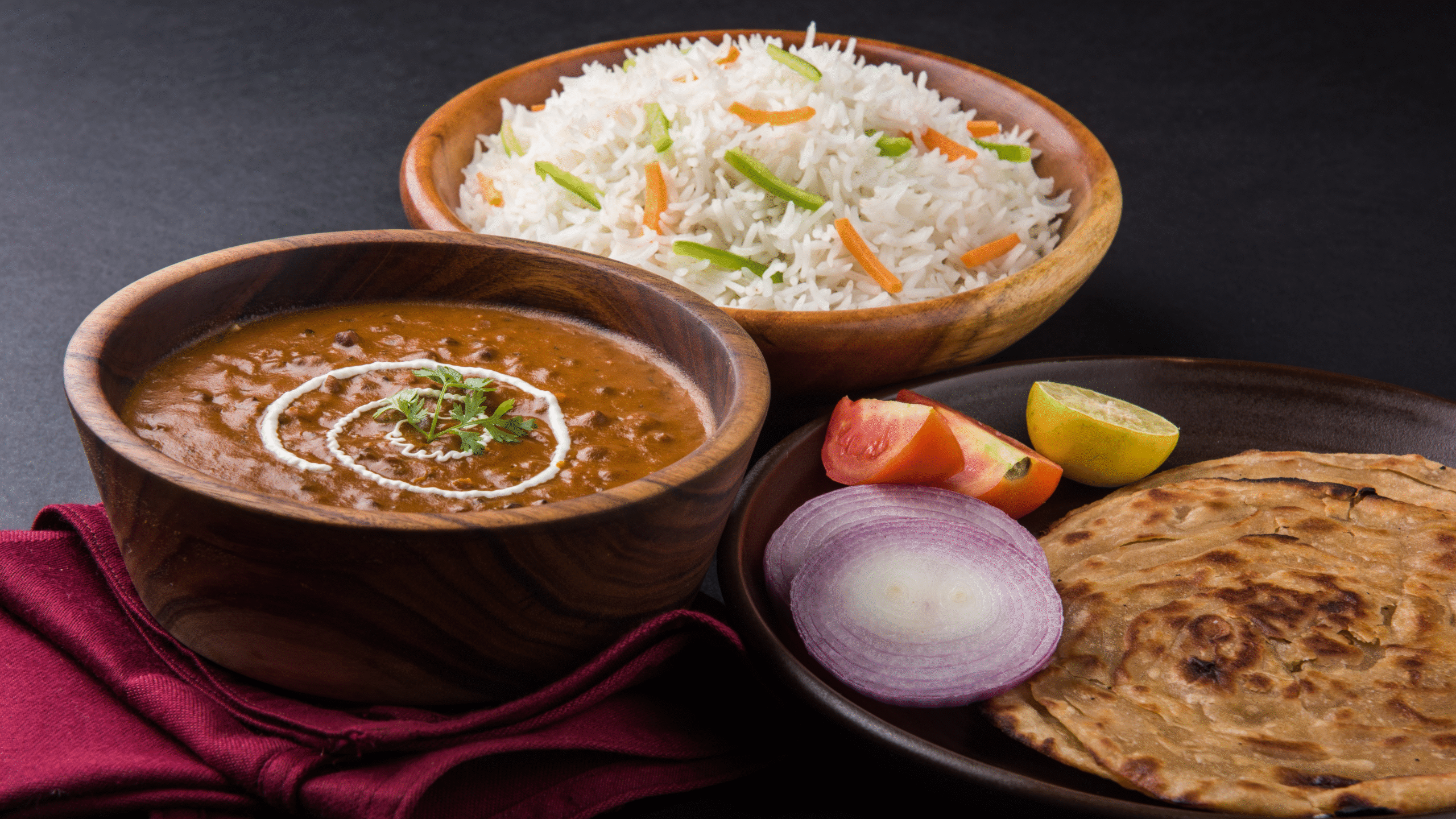
Pav Bhaji Recipe
Best Street-Style Pav Bhaji Recipe In Ahmedabad
If you’re craving the bold, buttery flavors of authentic street-style pav bhaji like the ones found at Manek Chowk or Law Garden in Ahmedabad, this recipe brings that exact magic to your kitchen. Made with fresh vegetables, signature pav bhaji masala, and lots of Amul butter, this is comfort food at its best.
Pav Bhaji is one of India’s most iconic street foods—a flavorful, spicy vegetable mash (called bhaji) served with soft, butter-toasted bread rolls (pav). Originating from Mumbai in the 1850s as a quick, hearty meal for mill workers, pav bhaji has evolved into a street food staple across India, especially in cities like Ahmedabad.
The bhaji is made by mashing boiled vegetables like potatoes, tomatoes, peas, and capsicum on a large iron tawa (griddle), then slow-cooked with a unique blend of spices known as pav bhaji masala. The rich texture, vibrant color, and the addition of generous amounts of butter make it irresistibly delicious. It’s typically served with chopped onions, a wedge of lemon, and coriander on top—giving a balance of tangy, spicy, and buttery flavors in every bite.
Pav Bhaji is loved by people of all ages and can be found at roadside stalls, cafes, and even five-star hotels. From classic versions to variations like cheese pav bhaji, Jain pav bhaji, and khada bhaji (chunky style), this dish continues to be a favorite comfort food across India.
About this recipe.
 Ingredients:
Ingredients:
Ingredients for Pav Bhaji – Explained
The heart of pav bhaji lies in its ingredients—simple, everyday vegetables and spices brought together with butter and bold masalas. Here’s a detailed look at each component from your image:

Boiled and cubed potatoes form the creamy, starchy base of the bhaji. They help bind all the vegetables together and give pav bhaji its signature thick, mashed texture.

Cauliflower adds mild flavor and bulk to the bhaji. When cooked and mashed, it blends beautifully with the other veggies and absorbs the spices well.

These add a touch of sweetness and color. Soft and tender when boiled, peas balance out the heat from the spices.

Finely chopped green bell peppers give pav bhaji a slight crunch and a distinct flavor that contrasts nicely with the creamy mashed vegetables.

Chopped tomatoes are essential for creating the tangy and slightly sweet flavor base. They break down during cooking and combine with spices to form the rich, red color of the bhaji.

Onions add sweetness and texture. They’re sautéed first and form the flavor base along with tomatoes, giving bhaji its depth and aroma.

Butter is the soul of pav bhaji! Amul butter is most commonly used for its rich taste and aroma. It’s used both during cooking and as a topping.

Adds the spicy kick. Adjust the quantity depending on your spice tolerance.

A basic but essential seasoning to enhance all the other flavors.

A freshly ground mix of ginger and green chili, this paste adds a zesty and sharp flavor that deepens the taste of the bhaji.

This spicy chutney made with red chilies and garlic intensifies the heat and adds a bold garlicky punch to the dish.

The signature spice mix for this dish, pav bhaji masala contains a blend of spices like coriander, cumin, fennel, dry mango powder, and more. It’s what gives the bhaji its iconic street-style flavor.

Used in some recipes to add a deep red color naturally. It also brings a hint of earthiness and sweetness to the bhaji.
This combination of vegetables, spices, and butter creates the vibrant, flavorful base that makes pav bhaji one of the most loved street foods in India.
Ingredients for Serving Pav Bhaji :
 Red Onions (Finely Chopped)
Red Onions (Finely Chopped)
Fresh, raw red onions are sprinkled on top of the hot bhaji before serving. They add a sharp bite, crunch, and contrast that enhances the rich and creamy bhaji.
 Butter
Butter
Butter isn’t just for cooking—it’s also added on top of the bhaji right before serving and used to toast the pav. Amul butter is the classic choice for its flavor and creamy texture. It gives pav bhaji its iconic richness and irresistible aroma.
 Lemon
Lemon
A wedge or slice of lemon is served on the side. A quick squeeze of lemon juice just before eating brightens up the dish and balances the spices with a tangy kick.
 Cilantro (Fresh Coriander Leaves)
Cilantro (Fresh Coriander Leaves)
Finely chopped cilantro is sprinkled over the bhaji for a burst of freshness and color. It adds a mild herbal note that perfectly complements the bold flavors of the masala.
 Pav (Dinner Rolls)
Pav (Dinner Rolls)
These soft, white bread rolls are a key part of the dish. Sliced in half and toasted in butter until golden, they are used to scoop up the bhaji. Pav absorbs all the spicy, buttery flavors—making every bite indulgent.
 Pav Bhaji Masala
Pav Bhaji Masala
This spice mix is sometimes sprinkled on the pav or bhaji during final cooking or garnishing. It’s what gives pav bhaji its signature street-style taste. A little extra on top can intensify the flavor beautifully.
How To Make This Recipe Step By Step :
Step 1: Sauté Butter and Aromatics
-
- In a large pan or tawa, add 2 tablespoons of butter.
-
- Once hot, add cumin seeds, then sauté finely chopped onions until translucent.
-
- Add ginger-garlic paste and cook for 1–2 minutes until the raw smell disappears.
-
- Add chopped tomatoes and cook until they are soft and mushy.
 Step 2: Add Capsicum & Cook
Step 2: Add Capsicum & Cook
-
- Add chopped green capsicum (bell pepper).
-
- Sauté for 3–4 minutes until capsicum softens.
-
- This adds a mild sweetness and texture to the bhaji.
 Step 3: Add Boiled Veggies
Step 3: Add Boiled Veggies
-
- Add boiled and mashed vegetables: potatoes, green peas, and cauliflower. (Optional: Add beetroot for red color.)
-
- Stir everything well to combine with the onion-tomato base.
 Step 4: Add Spices and Mash
Step 4: Add Spices and Mash
-
- Sprinkle in Pav Bhaji Masala, red chili powder, turmeric, and salt.
-
- Add a little water to adjust the consistency.
-
- Mash everything together using a potato masher until the mixture is smooth and well combined.
Pro Tip: The more you mash and simmer, the tastier it gets!
 Step 5: Add All Boiled Vegetables
Step 5: Add All Boiled Vegetables
In this step:
-
- Add boiled potatoes, cauliflower florets, green peas, and grated beetroot (optional but gives vibrant color) into the cooked masala base.
-
- These vegetables are the heart of Pav Bhaji. Each adds flavor and texture:
-
- Potatoes → creaminess
-
- Cauliflower → mild flavor
-
- Green peas → sweetness
-
- Beetroot → natural color enhancer
-
- These vegetables are the heart of Pav Bhaji. Each adds flavor and texture:
 Step 6: Mix Well and Cook
Step 6: Mix Well and Cook
-
- Pour in some water (around ½ to 1 cup) to get a nice gravy-like consistency.
-
- Stir well to combine all veggies with the onion-tomato-spice masala.
-
- Let it cook on medium heat so vegetables begin to absorb the flavors.
Tip: Don’t over-stir yet—let them soften naturally first.
 Step 7: Simmer the Curry
Step 7: Simmer the Curry
-
- Cook the mixture until vegetables are completely tender and the masala thickens.
-
- Keep the flame on low and let it simmer for 8–10 minutes.
-
- This allows the flavors to blend fully and create that classic “Pav Bhaji” taste.
 Step 8: Mash and Finish with Coriander
Step 8: Mash and Finish with Coriander
-
- Use a masher or back of a spoon to gently mash all the veggies into a thick, smooth bhaji.
-
- Add a little butter if needed and sprinkle chopped fresh coriander (cilantro) for aroma.
-
- Stir everything together until well blended and creamy.
Optional Add-ons: A dash of lemon juice or a cube of butter on top before serving enhances the richness.
 Step 9: Prepare the Butter Masala Base
Step 9: Prepare the Butter Masala Base
-
- In a pan, heat butter and add a pinch of pav bhaji masala.
-
- Mix in some finely chopped coriander (cilantro) and a little red chili powder (optional).
-
- Stir everything until it turns aromatic.
This flavorful butter masala base will coat the pav and give it that street-style taste!
 Step 10: Slice the Pav (Bread Rolls)
Step 10: Slice the Pav (Bread Rolls)
-
- Take fresh pav buns and slice them horizontally without cutting all the way through.
-
- This allows both inner sides to toast evenly.
Use soft, fresh pav for best results. Avoid hard or stale buns.
 Step 11: Toast the Inner Sides
Step 11: Toast the Inner Sides
-
- Place the sliced sides of pav face-down into the prepared butter masala.
-
- Press lightly and toast for a minute or two until golden and crisp.
Let the pav soak up the spiced butter for maximum flavor.
 Step 12: Flip and Toast the Outer Sides
Step 12: Flip and Toast the Outer Sides
-
- Flip the pav and toast the outer surface until golden-brown and slightly crispy.
-
- You can add extra butter if needed.
The perfect pav is soft inside and lightly crisp on the outside—so delicious!

 How to Serve Pav Bhaji (Like a Pro!)
How to Serve Pav Bhaji (Like a Pro!)
-
- Pour the hot bhaji onto a steel plate or thali.
-
- Add a small cube of butter on top—watch it melt!
-
- Serve with finely chopped onions, fresh lemon wedges, and buttery toasted pav.
-
- Garnish with fresh coriander leaves.
-
The right way to eat Pav Bhaji?
Tear a piece of pav, scoop up some bhaji, a little onion, a squeeze of lemon—and enjoy the explosion of flavors in your mouth!
 Why We Love Pav Bhaji
Why We Love Pav Bhaji
-
One-pot recipe
-
Ready in under 30 minutes
-
Kids and adults both love it
-
Perfect for parties, dinners, or late-night cravings
 Final Thoughts
Final Thoughts 
If you’re in Ahmedabad, Pav Bhaji isn’t just food — it’s an emotion. Whether you’ve enjoyed it at Manek Chowk, outside Law Garden, or from your favorite local laari, this dish brings back memories of late-night cravings, college hangouts, and family street food outings.
But now, with this step-by-step guide, you can recreate that same bold flavor right in your kitchen. No traffic, no waiting — just pure, buttery Pav Bhaji joy at home!
So go ahead — grab some fresh pav from your local bakery, whip up this delicious bhaji, and serve it hot with onions, lemon, and love.


